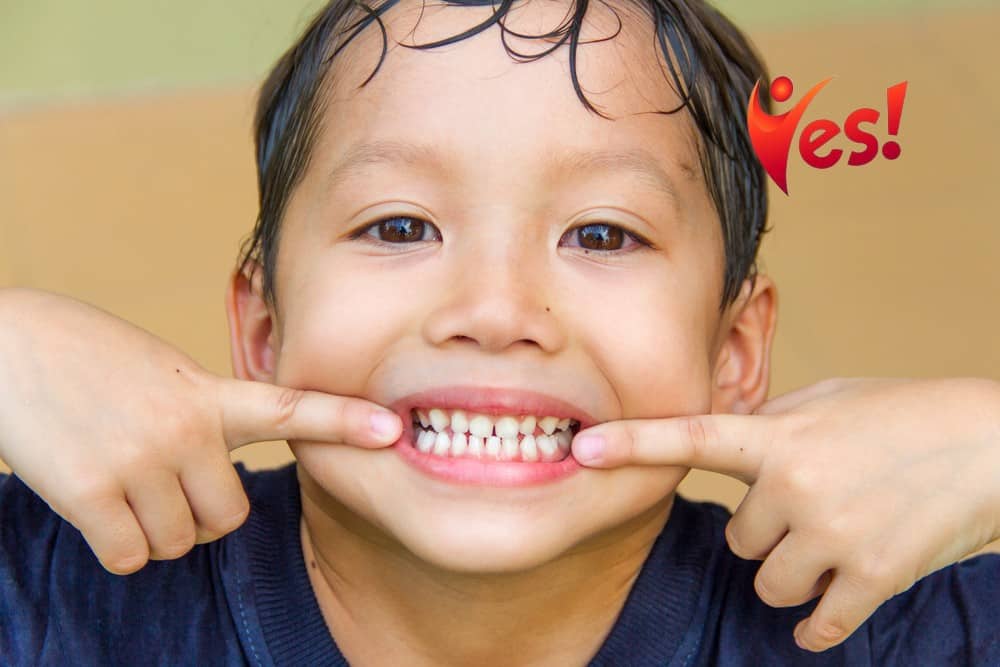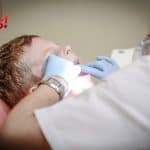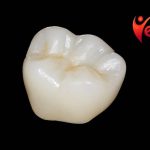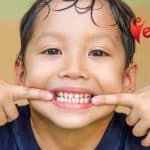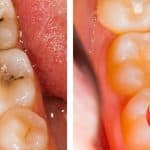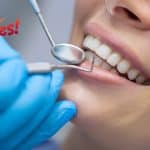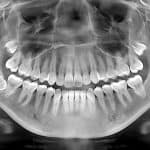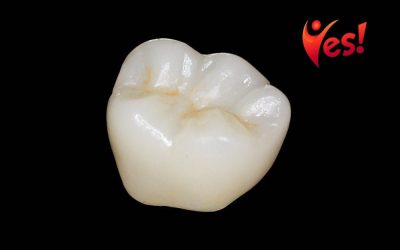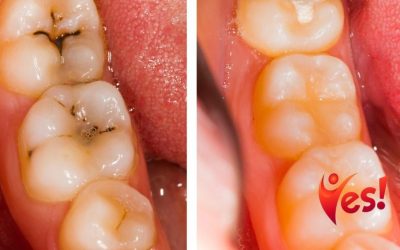Table of Contents
Children’s Teeth: Erupting and Falling Out
During the early years of your child’s life, their primary teeth erupt from their gums into their mouths. These teeth will eventually fall out to make room for their permanent counterparts. The timing of their eruption can vary significantly from child to child. The following article will discuss the process of tooth erupting and fallout.
This article will also touch upon the treatment options for impacted teeth.
Primary teeth erupt around age 6 to 12 months
A child’s first set of primary teeth erupts around age six to twelve months. These are also known as baby teeth or milk teeth and are replaced by their permanent counterparts later on. Most babies’ first tooth is a lower central incisor, and by the time they turn three, they should have all 20 of these teeth. Although this is a typical timeline, some babies do not have their primary teeth erupt at the expected age.
While your child’s primary teeth erupt around age six to twelve months, there may be some delay or problem that requires attention. It is important to remember that permanent teeth begin to emerge about one year after the primary teeth. Primary teeth erupt around six to twelve months, and they begin to replace baby teeth in the order they appeared. A child will eventually have up to 32 primary teeth, 16 on each side of the jaw.
Most children experience tooth erupting in the same order. The front middle teeth (the central incisors) emerge first. The top two incisors emerge next. Then, the lateral incisors emerge from the top and bottom jaw. The next set of teeth, the canines, come in after the primary teeth. Then, the final set of teeth, known as the molars, emerge around six to seven years old.
While the timing and order of the teeth’ appearance can vary, your child should have at least 20 primary teeth by the time they are three. This is usually a fairly predictable sequence. At six to twelve months, all of the primary teeth should have emerged. A child may experience sore gums during this period. If your baby is experiencing toothache, rubbing a cold cloth or a spoon against the gums may help.
In some cases, delayed tooth eruption may run in the family. This is due to various conditions, including low birth weight, regional odontodysplasia, Down syndrome, and vitamin deficiencies. A child may have multiple sets of primary teeth, followed by months without any new activity. This pattern will continue until the child reaches the school-age stage. But if the eruption is delayed, your child may require a different approach to tooth care.
Baby teeth fall out to make room for permanent teeth
The primary goal of orthodontic treatment for children is to encourage the eruption of permanent teeth. In some cases, the orthodontist may recommend extraction of baby teeth if the child has problems with them. In other cases, a dentist may recommend extraction to allow room for the eruption of the permanent teeth. In either case, it is important to consult with your orthodontist to determine the best course of action.
A child’s baby teeth begin to fall out around the age of six, but some children lose their teeth earlier. Depending on the child’s individual oral health, a child’s first teeth may begin to fall out as early as four months of age. Typically, baby teeth fall out in a sequence that follows their eruption. It is important to note that these teeth do not fall out at the same time.
In some instances, the permanent teeth may grow in the wrong direction. The permanent teeth are supposed to follow the same path as the primal teeth. For example, an upper canine may grow in the wrong direction, or get trapped under the baby teeth. In these cases, the best option is to undergo orthodontic treatment. In such a case, x-rays are taken to identify whether a problem exists.
Fortunately, permanent teeth will usually start to come in before deciduous teeth do. Around six years of age, the primary dentition begins to fall out. During this time, permanent teeth will come in, but the roots of the baby teeth will resorb, leaving the space for the permanent teeth. While this may seem like an unfortunate situation, it is perfectly normal for a child to have shark teeth. The problem usually fixes itself.
When the primary teeth have fallen out, the lateral incisors are the next to come out. The lateral incisors will fall out after the central incisors. The upper lateral incisors will fall out first, followed by the lower lateral incisors. Both of these fall out in sequence, and the last 12 teeth will erupt between the ages of ten and thirteen.
Eruption times vary from child to child
A baby’s emergence of primary teeth depends on the growth of the teeth. They erupt in pairs in both the upper and lower jaws. In most cases, lower incisors erupt before the upper molars. Primary teeth are smaller and whiter than permanent ones. The process of teeth eruption is called the “eruption sequence.”
Children in the present study had shorter eruption times than their peers in other studies. They had lower values than their peers outside Africa. The eruption time ranged from 0.1 to 1.5 years. Eruption times varied from child to child depending on gender and ethnicity. A previous study also showed a greater variation among girls than boys. Despite this, the present study did not observe any significant differences in eruption times between boys and girls.
Teeth erupt when a child is 6 months old. A baby’s lower central incisors erupt first. The top four incisors will then erupt. These teeth will fill the gaps in the jaw. Girls’ teeth will erupt faster than boys’. By age three, all 20 primary teeth will have emerged. Although children erupt their teeth at different rates, the timing of their eruption will depend on the child’s age.
First molars emerge first. They are followed by two canines. Lateral incisors usually erupt between ages 7-9 and second molars appear between ages 10-12. Eventually, all of the teeth will be present. These teeth will be followed by the fourth molars, or bicuspids. And while this might sound like a lot, it’s normal for these teeth to arrive in between nine and 12 months.
In addition to erupting primary teeth, children’s permanent teeth will also erupt at different times. Generally, a baby’s teeth erupt one after another. By the age of two or three, children should have their upper and lower molars. If a baby doesn’t have a full set of permanent teeth by the age of six, it is time to see a dentist. Eruption times vary from child to child and from one year to the next.
Treatment options for impacted teeth
If your child has impacted teeth, treatment is important to help bring the tooth into the correct position and avoid further complications. Imbalanced teeth can cause gum disease and other problems, and they can also push neighboring teeth out of alignment. These impacted teeth may also lead to pain and inflammation when chewing, and they can even cause jaw pain and even infection. It is important to seek treatment for impacted teeth as soon as you notice a problem.
Early treatment of impacted teeth can be much simpler than treatment later on. In some cases, baby teeth can be extracted to free up space in the jaw, and orthodontic care can be used to realign the teeth. The treatment for impacted teeth depends on the specific diagnosis. In some cases, a child’s impacted teeth may be a sign of a larger problem that requires an orthodontic treatment or surgical removal.
There are many treatment options for impacted teeth in children. Surgical exposure of the impacted tooth can also help prevent the formation of jaw pain. In some cases, an impacted tooth can interfere with other teeth, which is why x-rays are essential for early detection. In some cases, impacted teeth may also affect other teeth, so it is important to seek treatment as soon as you notice a problem.
Early detection of impacted teeth is important for your child’s oral health. Often, early detection of the condition will allow a dentist to recommend a treatment plan. Using x-rays can give dentists information about the tooth’s growth and position. It is important to make an appointment for your child’s oral health checkups to determine if your child is suffering from impacted teeth.
Imimpacted teeth are common in children and teenagers. The impacted tooth is stuck in the gum and can cause dental and health issues. There are various treatment options for impacted teeth. It is important to discuss treatment options with your child. The options can range from extraction to surgery. The treatment option that is best for your child will depend on the cause of the problem. If it is genetic, there is a chance that your child’s teeth are impacted.

